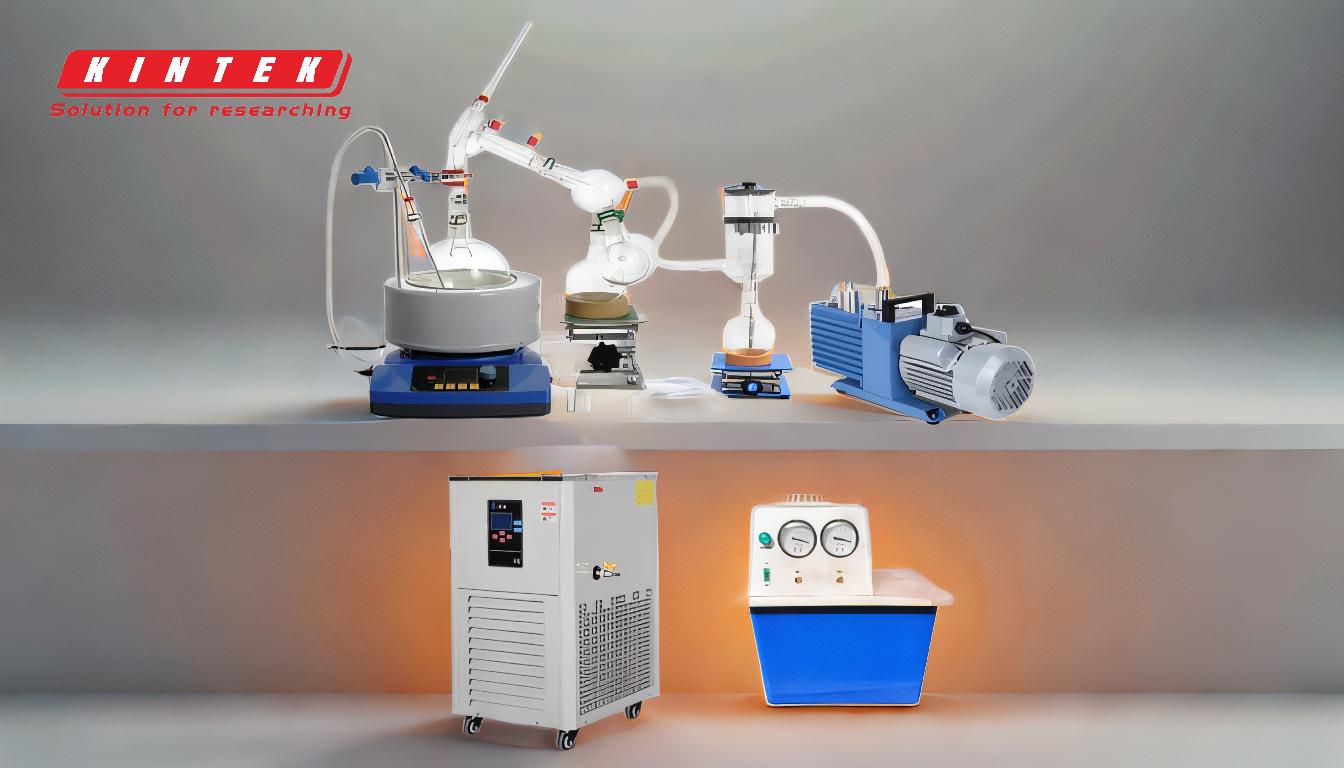Bumping in a rotary evaporator (rotovap) is a common issue that occurs when a liquid boils unevenly, causing sudden bursts of vapor and potentially leading to sample loss or contamination. Preventing bumping involves a combination of proper equipment setup, careful control of operating conditions, and the use of additives or techniques to ensure smooth boiling. Key strategies include monitoring and adjusting temperature and vacuum levels, using boiling chips or capillary tubes, selecting appropriate flask sizes, and employing traps or specialized condenser arrays. Additionally, maintaining the sample volume below half the flask's capacity and stirring the solution can further reduce the risk of bumping.
Key Points Explained:

-
Control Temperature and Vacuum Levels:
- Explanation: Bumping often occurs when the liquid is heated too quickly or when the vacuum is applied too abruptly. To prevent this, gradually increase the temperature and vacuum levels. This allows the liquid to boil more uniformly, reducing the likelihood of sudden vapor bursts.
- Implementation: Start with a lower temperature and vacuum setting, then slowly increase them while monitoring the process. Avoid rapid changes that could destabilize the boiling process.
-
Use Boiling Chips or Capillary Tubes:
- Explanation: Boiling chips and capillary tubes provide nucleation sites for bubbles to form, promoting even boiling and reducing the risk of bumping. Boiling chips are porous materials that release trapped air, while capillary tubes allow a steady stream of air to enter the solution.
- Implementation: Add one or two boiling chips to the flask before starting the evaporation. If using a capillary tube, ensure it is sealed and placed in the solution to provide a continuous source of nucleation sites. Replace boiling chips if the solution is cooled and re-heated, as their pores may become clogged with solvent.
-
Select Appropriate Flask Size and Sample Volume:
- Explanation: The size of the flask and the volume of the sample play a crucial role in preventing bumping. A flask that is too large or too small for the sample volume can lead to uneven boiling. Ideally, the sample volume should be less than half the flask's capacity to provide sufficient surface area for evaporation.
- Implementation: Choose a flask that is appropriately sized for the sample volume. For example, if you have 100 mL of liquid, use a flask with a capacity of at least 250 mL to ensure proper boiling.
-
Employ Traps or Bump Traps:
- Explanation: Traps, also known as bump traps or bump trumps, are devices placed between the flask and the condenser to catch any splashed liquid or vapor that results from bumping. They act as a safety measure to prevent sample loss or contamination.
- Implementation: Install a bump trap in the rotovap setup. Ensure it is properly connected and positioned to effectively capture any material that may be ejected during bumping.
-
Stir the Solution:
- Explanation: Stirring the liquid creates a vortex that breaks up large bubbles and promotes even boiling. This reduces the chances of bumping by ensuring that the boiling process is more controlled and uniform.
- Implementation: Use a magnetic stirrer or a mechanical stirrer to continuously agitate the solution during the evaporation process. Adjust the stirring speed to maintain a gentle but consistent vortex.
-
Use Specialized Condenser Arrays:
- Explanation: For difficult or volatile samples, specialized condenser arrays can be used to enhance the efficiency of vapor condensation and reduce the risk of bumping. These systems provide additional cooling capacity and help manage the vapor flow more effectively.
- Implementation: If working with challenging samples, consider upgrading to a rotovap system with a specialized condenser array. Ensure the system is properly maintained and cleaned to prevent blockages.
-
Avoid Overfilling the Flask:
- Explanation: Overfilling the flask can lead to insufficient surface area for evaporation, increasing the likelihood of bumping. Keeping the sample volume below half the flask's capacity ensures that there is enough space for the liquid to boil evenly.
- Implementation: Always measure the sample volume and select a flask that provides adequate headspace. Avoid the temptation to maximize flask usage at the expense of safety and efficiency.
By following these strategies, you can significantly reduce the risk of bumping during rotary evaporation, ensuring a smoother and more efficient process. Each method contributes to creating a stable and controlled environment for evaporation, minimizing the potential for sudden vapor bursts and associated issues.
Summary Table:
| Strategy | Key Implementation |
|---|---|
| Control Temperature and Vacuum Levels | Gradually increase temperature and vacuum; avoid abrupt changes. |
| Use Boiling Chips or Capillary Tubes | Add boiling chips or capillary tubes to promote even boiling. |
| Select Appropriate Flask Size | Use a flask with at least double the sample volume (e.g., 250 mL for 100 mL sample). |
| Employ Traps or Bump Traps | Install bump traps to catch splashed liquid or vapor. |
| Stir the Solution | Use a magnetic or mechanical stirrer to create a vortex for controlled boiling. |
| Use Specialized Condenser Arrays | Upgrade to specialized condenser arrays for volatile samples. |
| Avoid Overfilling the Flask | Keep sample volume below half the flask's capacity to ensure proper boiling space. |
Need help optimizing your rotary evaporation process? Contact our experts today for personalized advice!













